The Sarah’s Walking Club Fall Scavenger Hunt kicks off September 15 and runs through November 1. Here’s how it works:
- Use the photos, videos and clues below to find at least 10 out of the 20 plants on this list at parks and preserves around the Tampa Bay area
- Post photos of what you find in the Sarah’s Walking Club Facebook group
- When you find at least 10 of the plants, fill out this form to be entered into a contest to win a Sarah’s Walking Club item of your choice from ABCActionNews.com/shop
Happy hunting!
If you have trouble downloading, click this link.
1. Saw palmetto
What is it? Saw palmetto have palm-shaped leaves with big, rough stems. The stalk is serrated like a saw. Be careful! It can actually cut you.
Saw palmetto can sometimes be confused with cabbage palm (sabal palmetto). An easy way to tell the difference is looking at where the petiole meets the blade. Saw palmettos are stubby in the center.

What makes it unique? Saw palmetto can grow up to ten feet and have berries that range from yellow to black, depending on how ripe they are. Pollinators and wildlife love the berries. Sometimes, the berries are used medicinally by people.
Where can I find it? Saw Palmetto can be found in a variety of environments, but especially in hammocks, generally in drier areas.
2. Cabbage palm
What is it? The cabbage palm can get very big. It can either be bushy-like or develop into a tree. Again, cabbage palm and saw palmetto are often confused. However, the midrib of a cabbage palm extends far into the leaf.
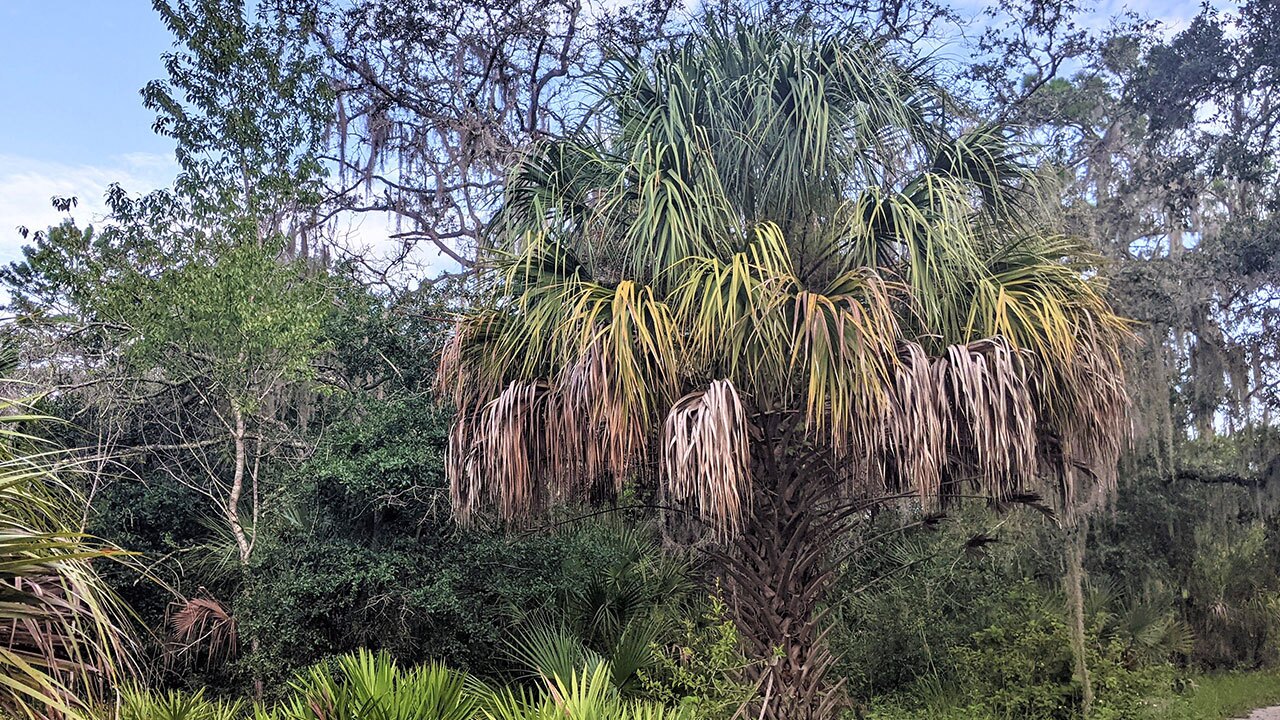
What makes it unique? Even though the cabbage palm is more closely related to grasses, it’s still the state tree of Florida. Cabbage palm can even grow as far north as North Carolina.
Where can I find it? Cabbage palm can be found in moist or dry habitats, often in hammock and flatwoods areas.
3. Resurrection fern
What is it? Resurrection ferns are epiphytic, which is a fancy way of saying that they grow on other plants, but aren’t parasitic. They get nutrients from the air and rain! True to its name, resurrection ferns will often look dead during times of drought, but as soon as it rains, they turn a nice, leafy green again.
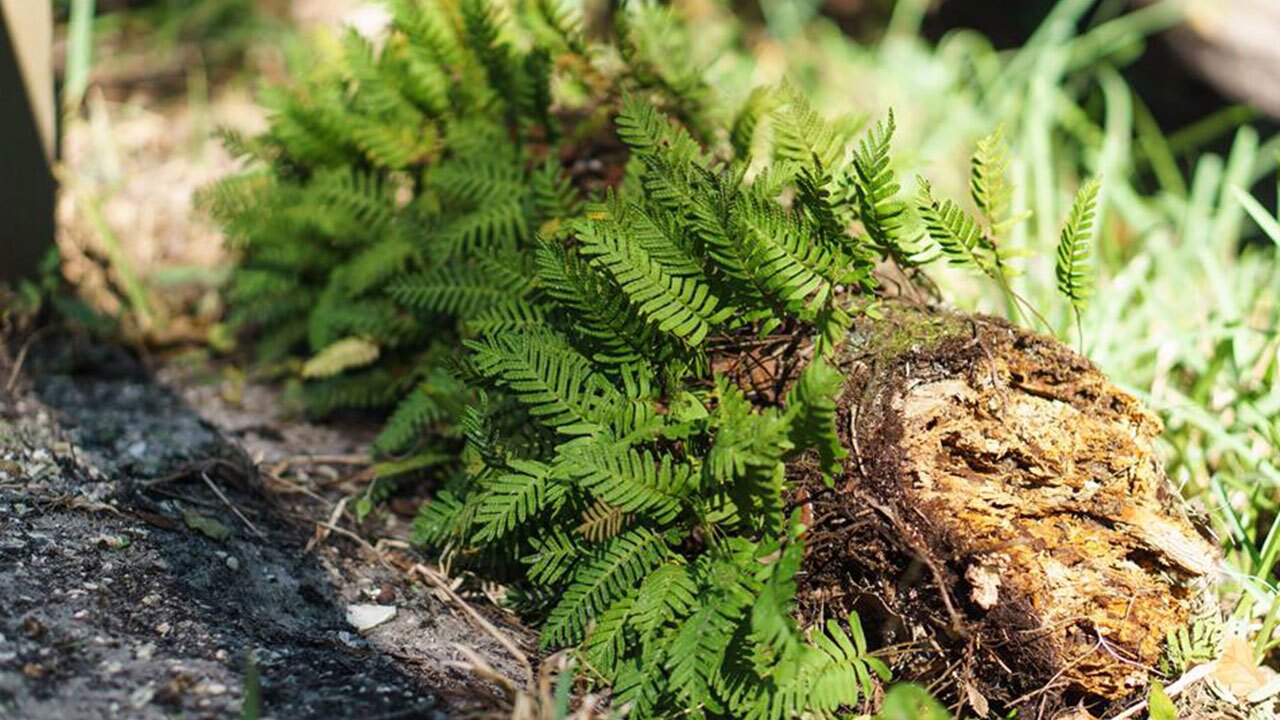
What makes it unique? Resurrection ferns can grow as far north as New York and as far west as Texas.
Where can I find it? Resurrection ferns are found in wet to dry hammocks, often times in oak trees.
4. Partridge pea
What is it? As you might expect, the partridge pea is part of the pea family. The seed looks like a pea pod and the flower looks like a pea flower. Wildlife like to eat the fruits and pollinators really enjoy the flower.

What makes it unique? Partridge pea leaves are sensitive to touch. When you rub the underside, the leaflets will close up.
Where can I find it? The partridge pea blooms June through October and can often be found in sunny, open and even sandy areas, in well-drained soil.
5. Sweetgum
What is it? Sweetgum looks very similar to red maple, but has five points instead of three. In the fall, sweetgum turns a yellow and red color. If you’re not quite sure if what you’re looking at is sweetgum, check out the ground. You’ll sometimes be able to find round, woody seeds that are spiked (nicknamed “gumballs”).
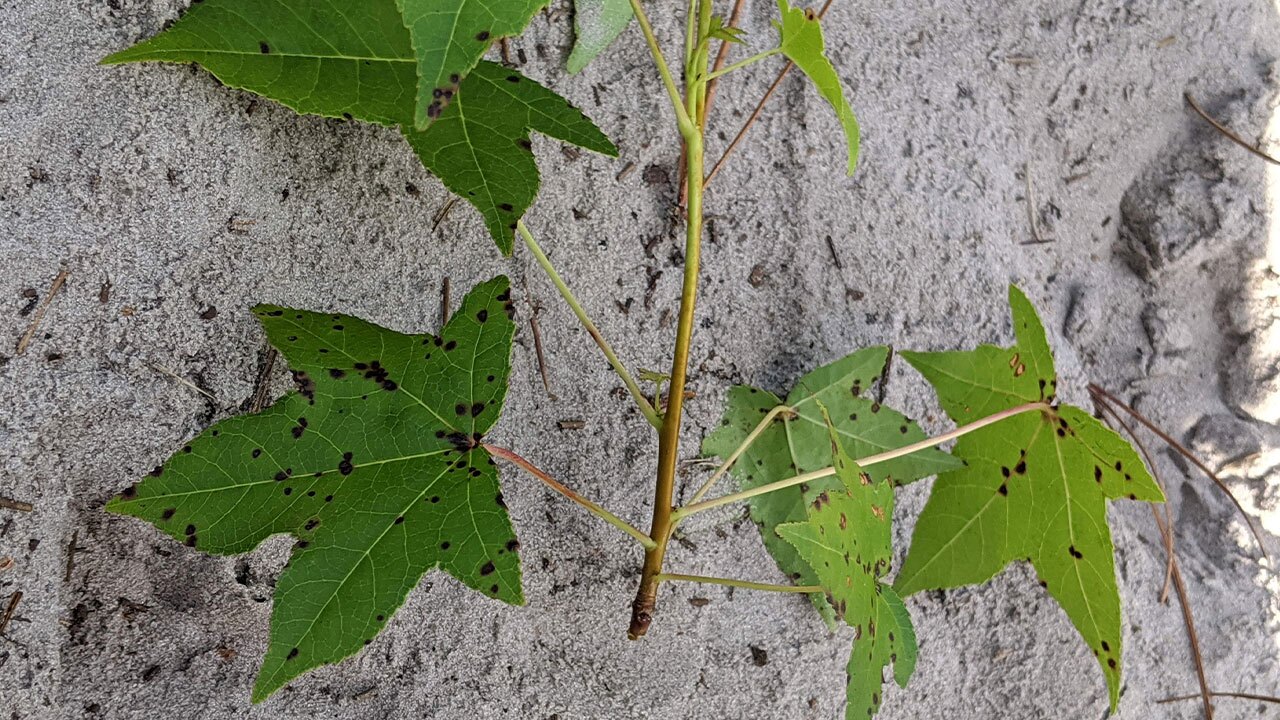
What makes it unique? When you crush the leaves, you’ll find a nice, spicy scent.
Where can I find it? Sweetgum can be found in moist hammocks, as well as floodplain forests.
6. Muscadine grape
What is it? The muscadine grape is within the grape family. It is dioecious, which means male plants are separate from female plants. Only the female plants have berries. The berries are a nice purple color, similar to what you would see in the store. Animals enjoy snacking on the berries.
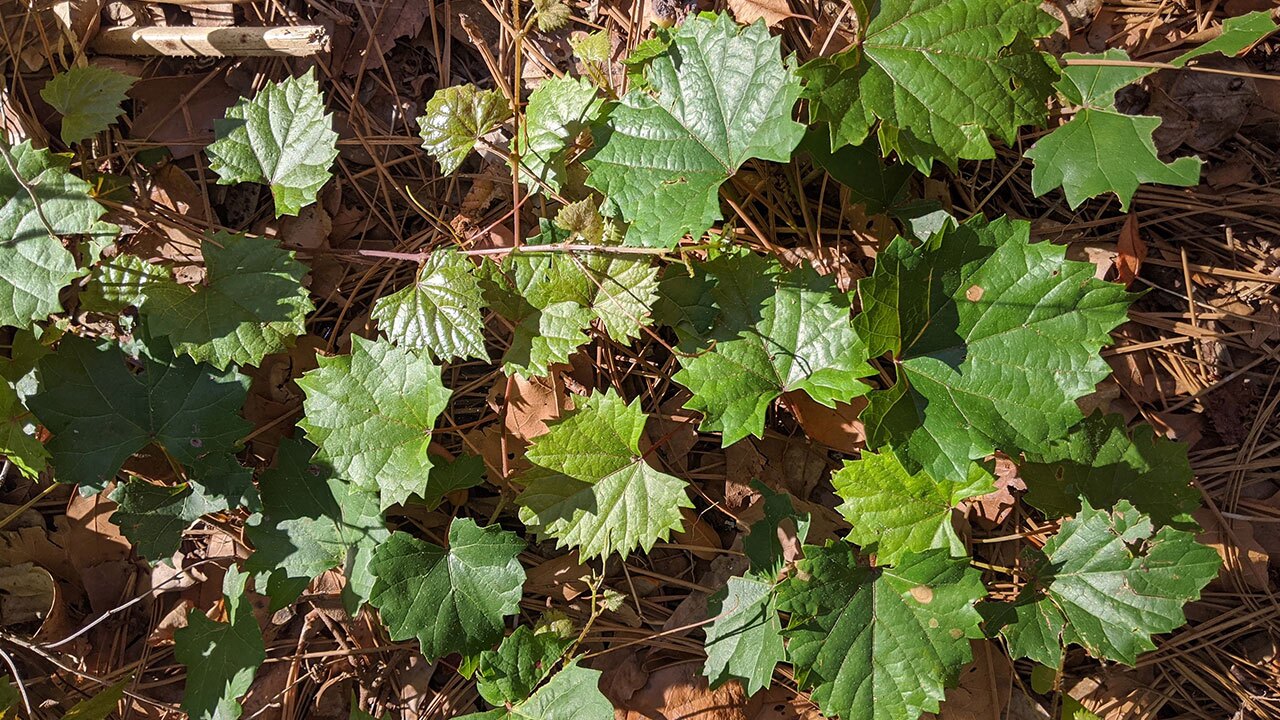
What makes it unique? The grapes can be used to make jelly and wine. The leaves are also edible and used for crafts.
Where can I find it? Muscadine grapes can be in many places, including in the shade and in the sun.
7. Virginia creeper
What is it? Virginia creeper has five leaflets. It can commonly be confused with poison ivy, but poison ivy only has three leaflets. Virginia creeper looks especially beautiful during the fall when it can turn a burgundy color. The berries are a great source for birds during the winter, but are toxic to humans.
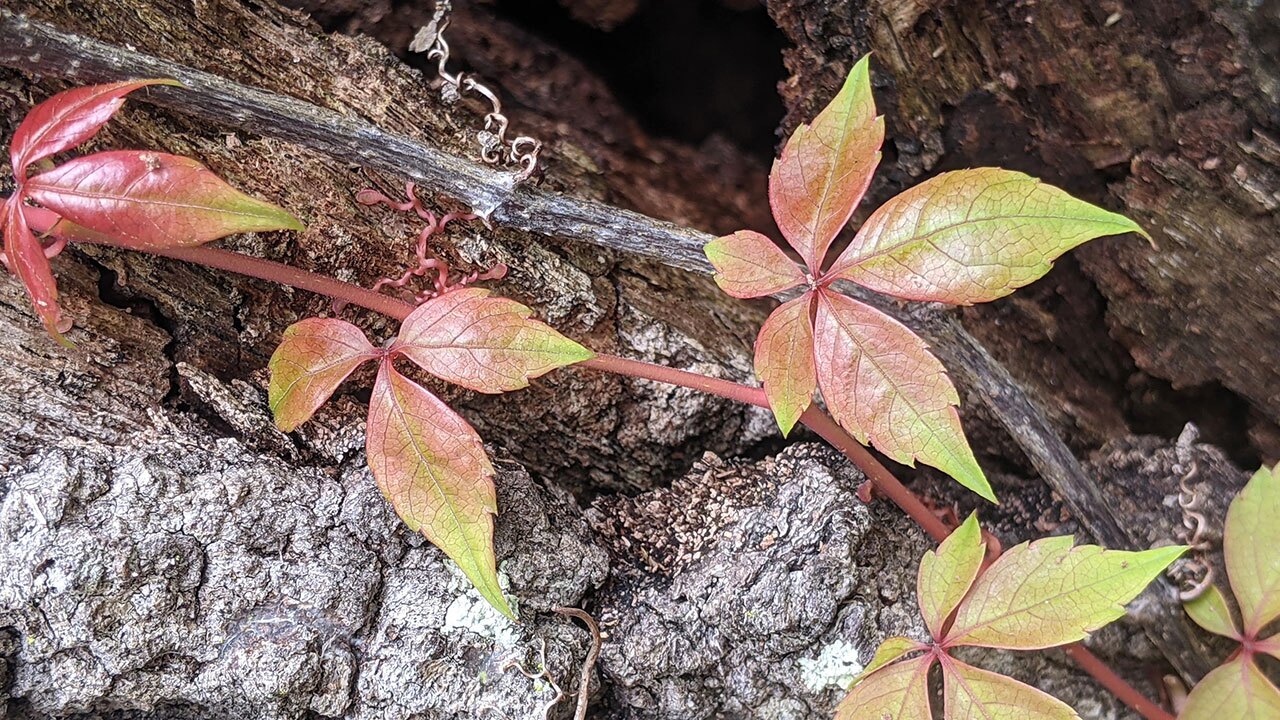
What makes it unique? Virginia creeper has adhesive pads on its tendrils that help it climb virtually any surface.
Where can I find it? Virginia creeper can be found in shady areas, like hammocks.
8. Goldenrod
What is it? Goldenrod is one of the most beautiful plants around the bay area. It blooms throughout the fall and can be easily spotted because of its bright, yellow flowers. In total, there are 21 species of goldenrod in Florida.
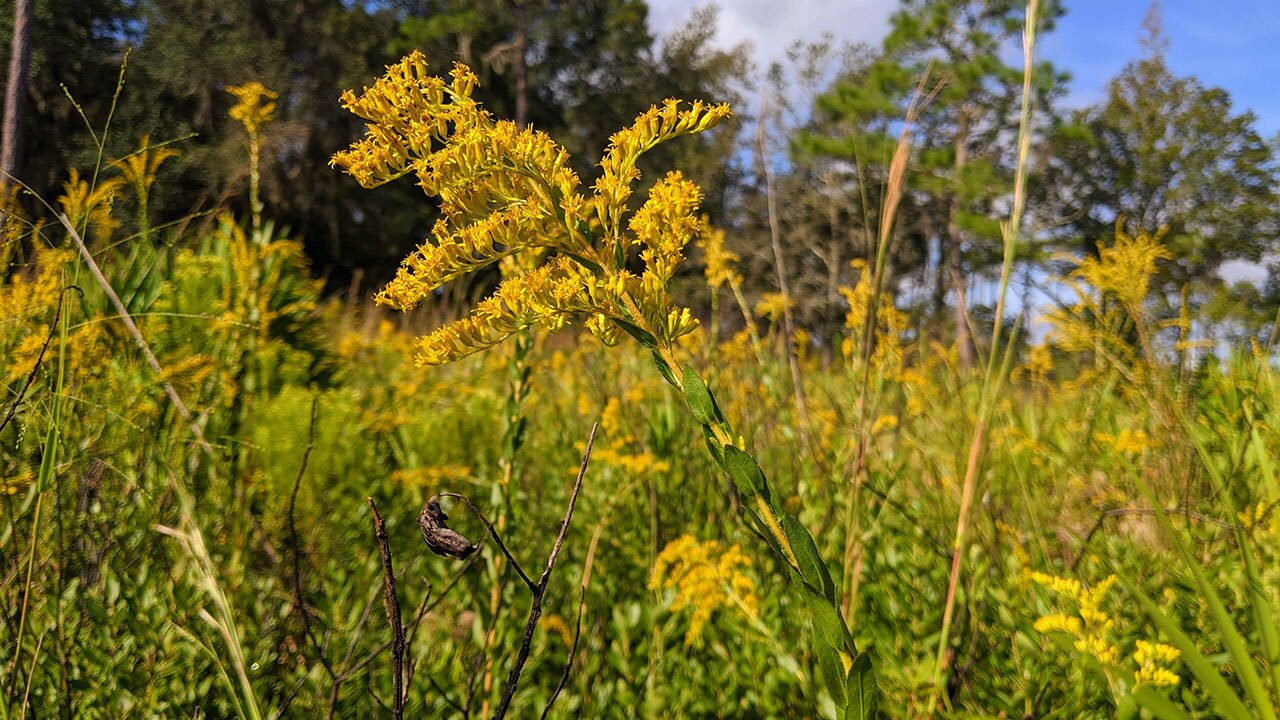
What makes it unique? Goldenrod is sometimes blamed for allergies, but often ragweed is the culprit, which blooms at the same time.
Where can I find it? Goldenrod can be found in many places, but tends to prefer sunny, open spaces. However, it can grow in wet or sandy spots as well.
9. Coreopsis
What is it? Coreopsis, the state’s flower, is bright yellow and often found blooming in large patches. Some compare it to a small sunflower. There are 12 species of coreopsis native to Florida.
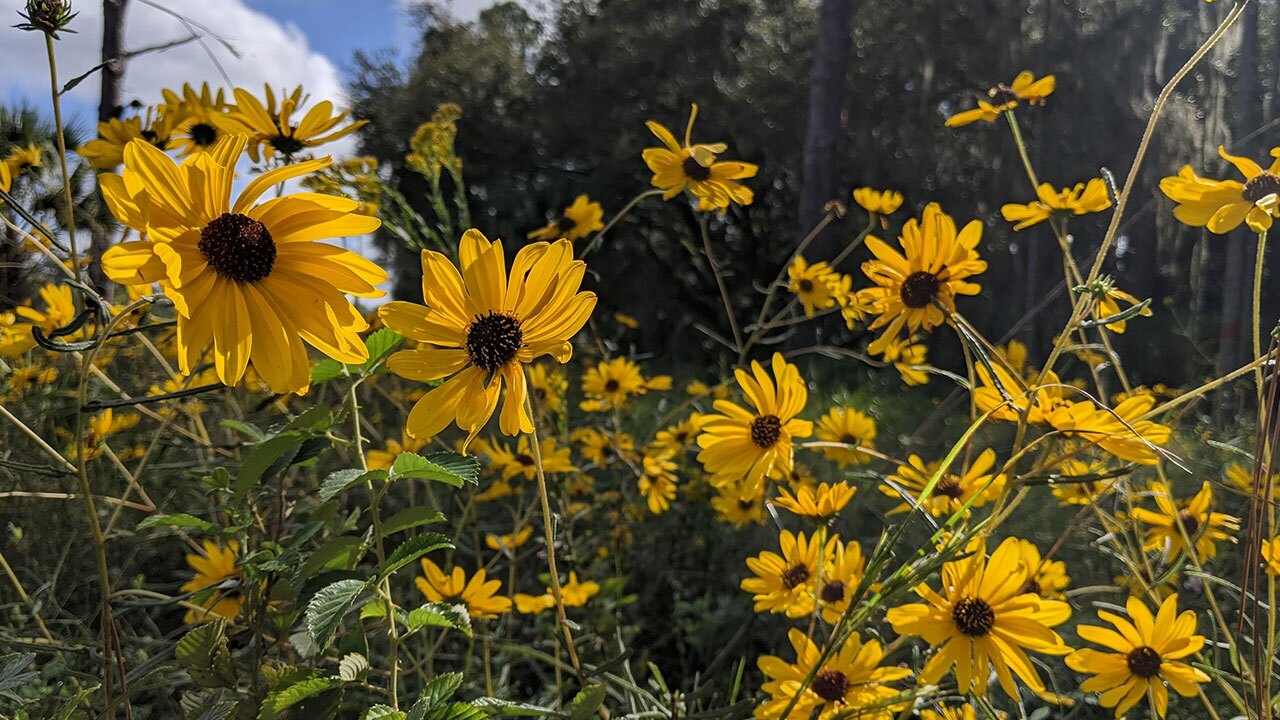
What’s unique about it? Coreopsis is often called ‘tickseed’ because its pointy seeds stick to clothing and hair. That trait helps the plant spread!
Where can I find it? Coreopsis can be found in sunny areas.
10. Beautyberry
What is it? Beautyberry is a plant native to Florida. It lives up to its name! In the fall, there are bright purple berries clustered along the stem. Even without the berries, the plant is still a welcome addition to gardens because of its big, beautiful leaves.
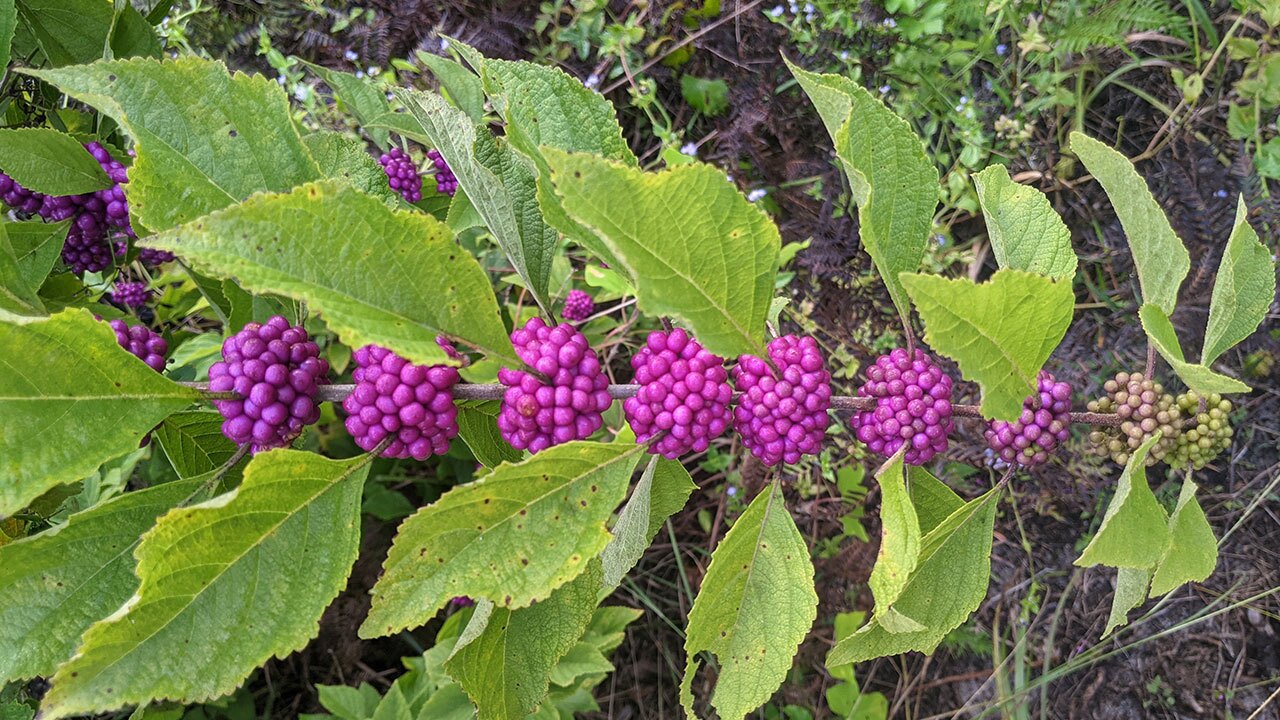
What’s unique about it? Wildlife love the berries, and so do some humans! The berries are often used to make jam.
Where can I find it? Beautyberry can be found in shady areas with dappled sunlight.
11. Meadow beauty
What is it? Meadow beauty starts blooming in the spring and continues throughout the fall. Look for a little purple flower with a bright yellow center. Some can be pink or white.
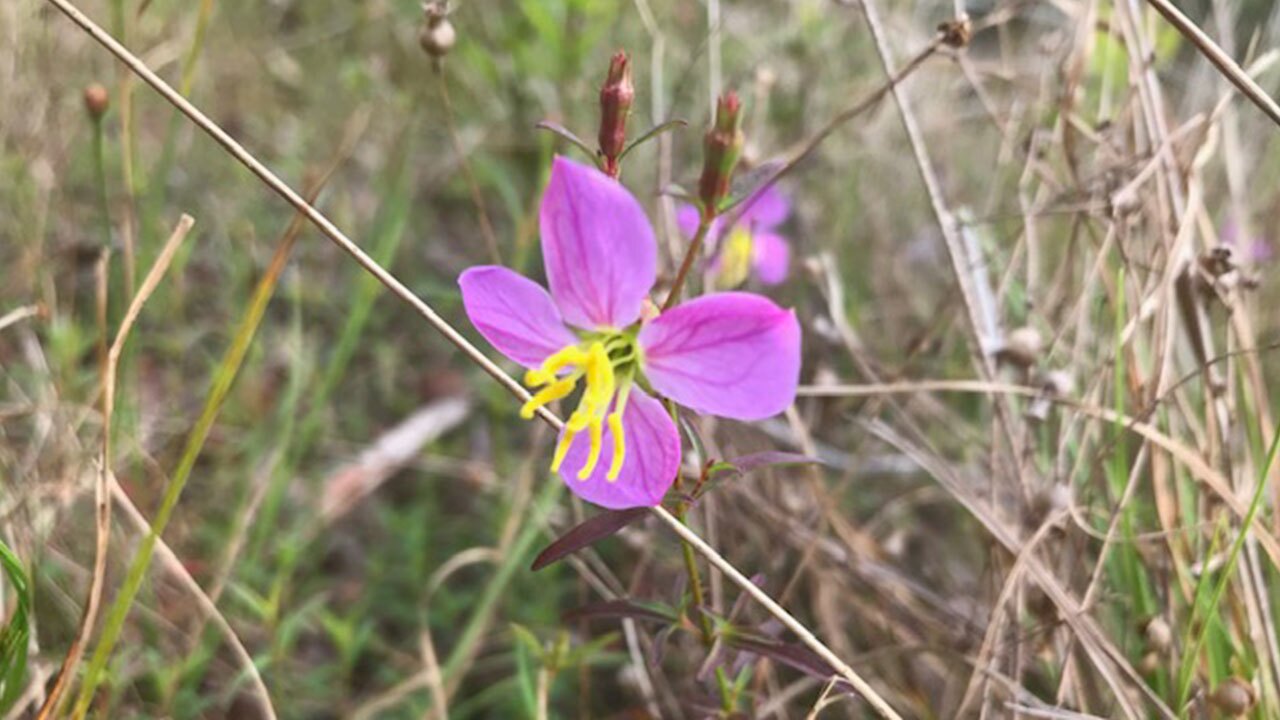
What’s unique about it? There are ten species of meadow beauty found in Florida. Some meadow beauty flower stems can be up to two feet tall, but they’re often much smaller.
Where can I find it? Like the name implies, it can be found in meadows. Look for nice, open sunny areas like pine flatwoods and scrub.
12. Chalky Bluestem
What is it? Chalky bluestem is a very common plant in the Tampa Bay area. It blooms from September to October. It grows very fast and spreads quickly. Chalky bluestem has long been used to graze cattle, and it still is to this day.

What’s unique about it? Chalky bluestem lives up to its name. If you rub your fingers along the stem, you’ll come away with a chalky residue. That residue makes the plant look a blue color.
Where can I find it? Chalky bluestem grows very quickly and can be found in sunny, open areas like pine flatwoods areas.
13. Poison ivy
What is it? Poison ivy is sometimes difficult to identify because the leaves can be so many different shapes, but remember, “leaves of three, let it be”. Eighty percent of people are naturally sensitive to poison ivy. Others can become sensitive with exposure.
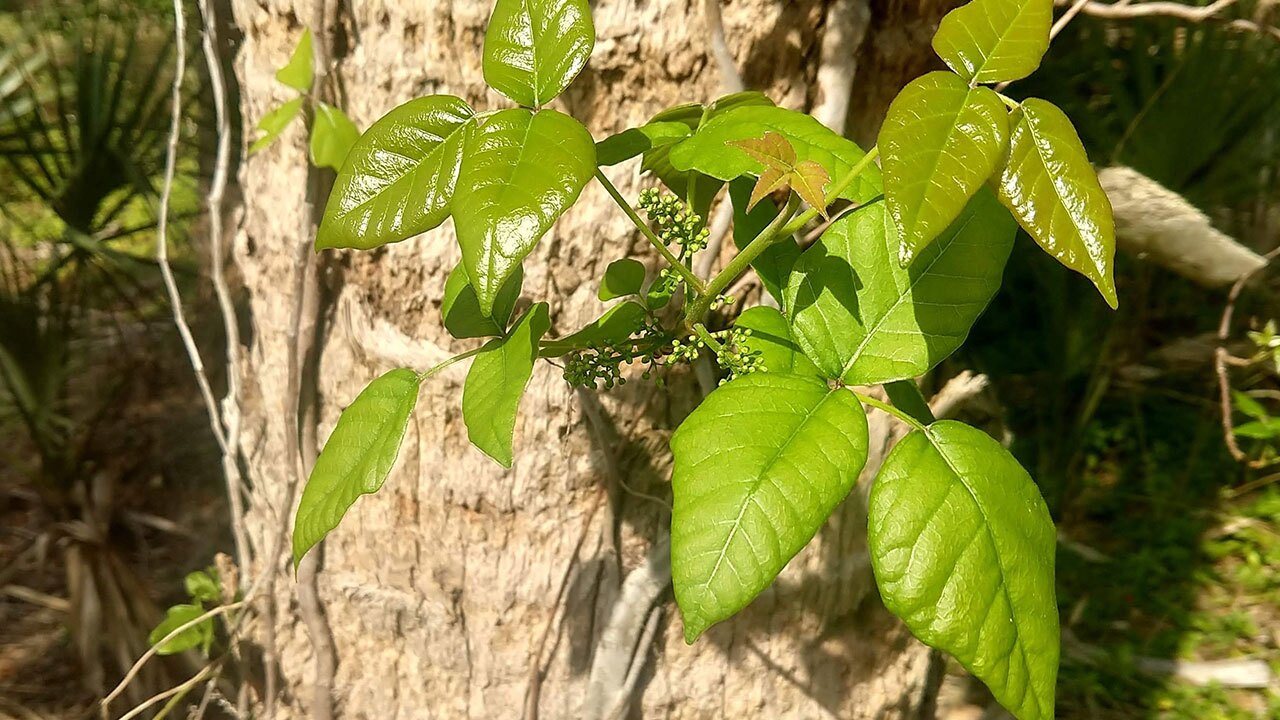
What’s unique about it? Poison ivy does have an upside! The berries provide an excellent food source for all kinds of wildlife, including birds like turkey, quail, cedar waxwings, tufted titmice, robins and more.
Where can I find it? Poison ivy is often found in shady areas, like hammocks. It can grow as a ground cover, a shrub, or a vine all the way up into the trees. Keep an eye out for it growing right along trails as well.
14. Winged sumac
What is it? Winged sumac is a popular garden plant. It has glossy leaves that turn red before it drops its leaves. Winged sumac has a white little flower cluster that then turns into berries that birds and deer love. Those berries were used to dye cloth for a long time in Florida.

What’s unique about it? Winged sumac is not toxic to touch, unlike poison ivy and poison sumac.
Where can I find it? Winged sumac can be found in open, pine flatwoods areas.
15. Smilax vine
What is it? Smilax vine is one of the most common vines in Florida. There are 12 different species. The leaves are many different shapes and range from bright green to dark green. Smilax, like grapevine, is dioecious, which means male plants are separate from female plants. Only the female plants produce flowers and berries. The male plants are more common.
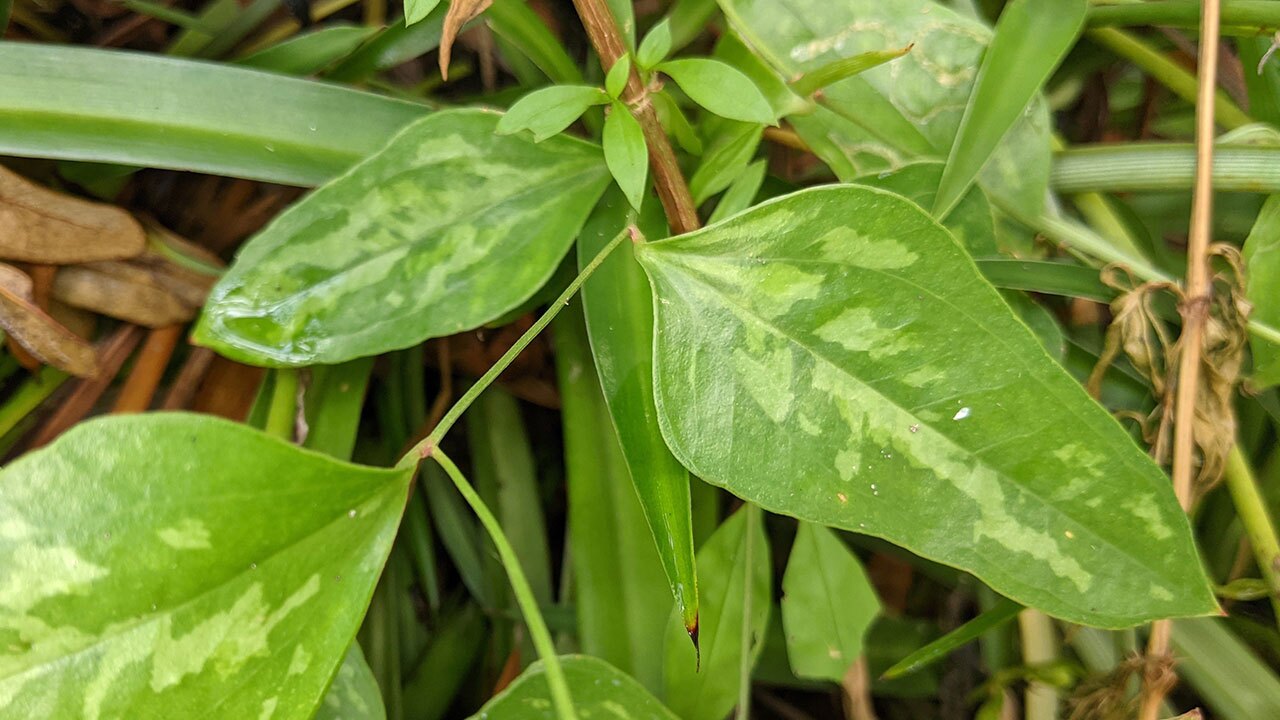
What’s unique about it? Smilax has been used for thousands of years as a vegetable by Florida’s native peoples. The green growing tips were eaten and the root was pounded to make a starchy flour.
Where can I find it? Smilax vine can be found at most likely any park or nature preserve all over the Tampa Bay area. It often likes to grow in shady, hammock areas, but you can find it in sunny spots as well.
Rare plants
16. Air plant
What is it? Air plants are common in Florida. They are epiphytes, which means they get all of their nutrients from the air and rain around them. Air plants are beautiful when they flower. Sometimes they’ll have a really bright red flower, others more purple.
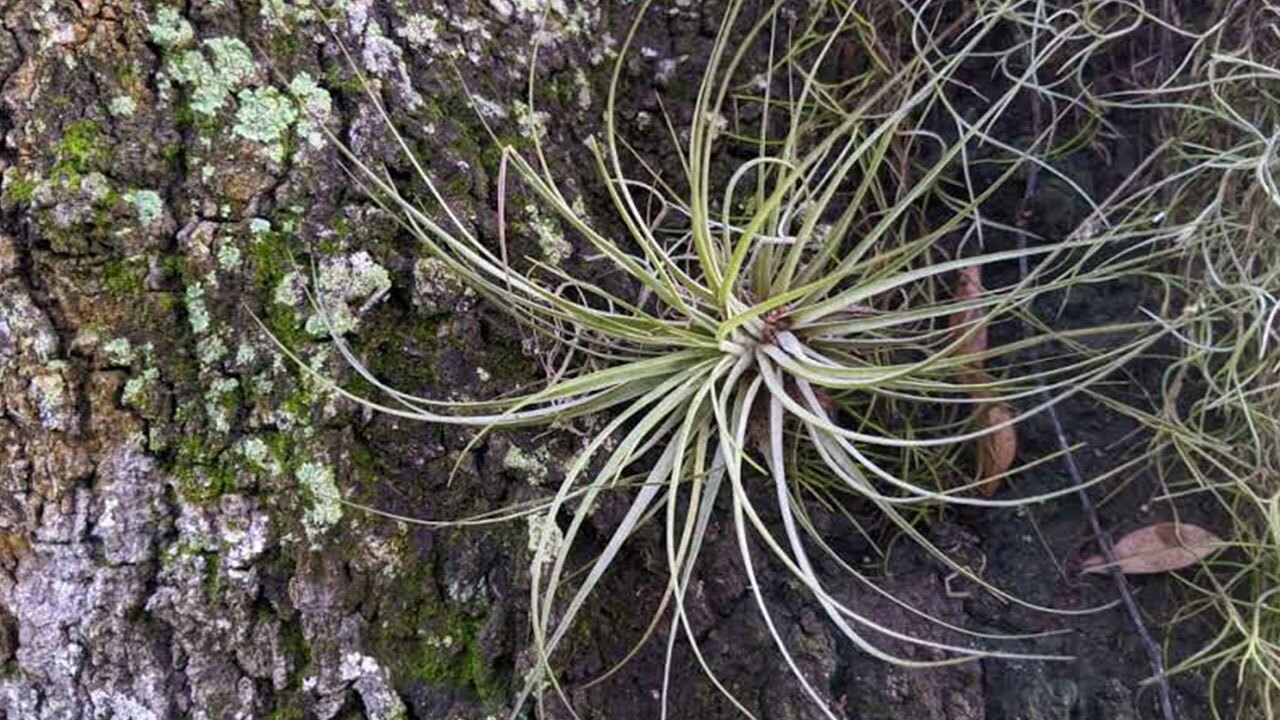
What’s unique about it? Some species are threatened. So, if you see air plants at a nature preserve or park, leave it alone to let it grow in its natural habitat.
Where can I find it? Air plants can be found in shady areas. They love to live on oak trees, but they live on other trees as well.
17. Dodders
What is it? Dodders is a parasitic plant. That means it puts down roots into the stems of other plants and suck the water and nutrients out of them. Sometimes it can damage or kill the host plant, but most times it does not.
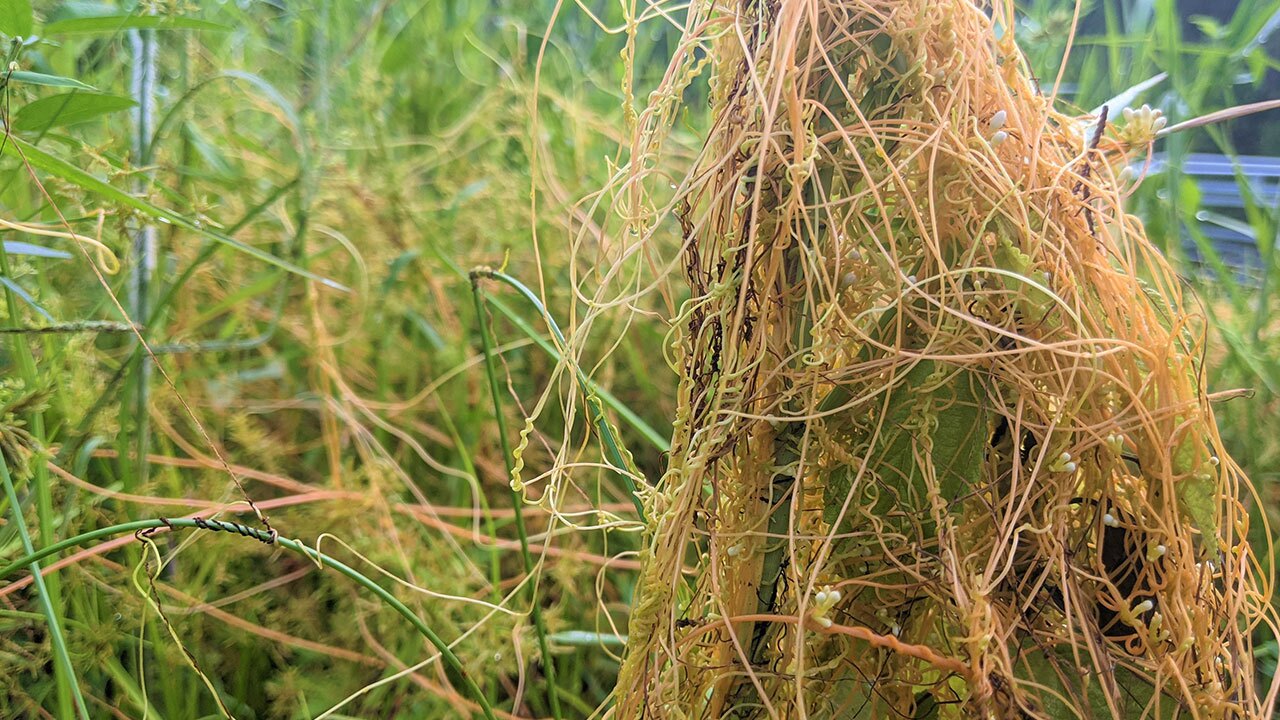
What’s unique about it? Dodders can be orange, yellow or white. It doesn’t have leaves, but is instead fibrous.
Where can I find it? Dodders can be found on riverbanks and other wet areas.
18. False reinorchid
What is it? The false reinorchid is a bit inconspicuous. The flowers can be green or even white, depending on the species. That can make it a bit difficult to spot! It blooms in the fall and winter.
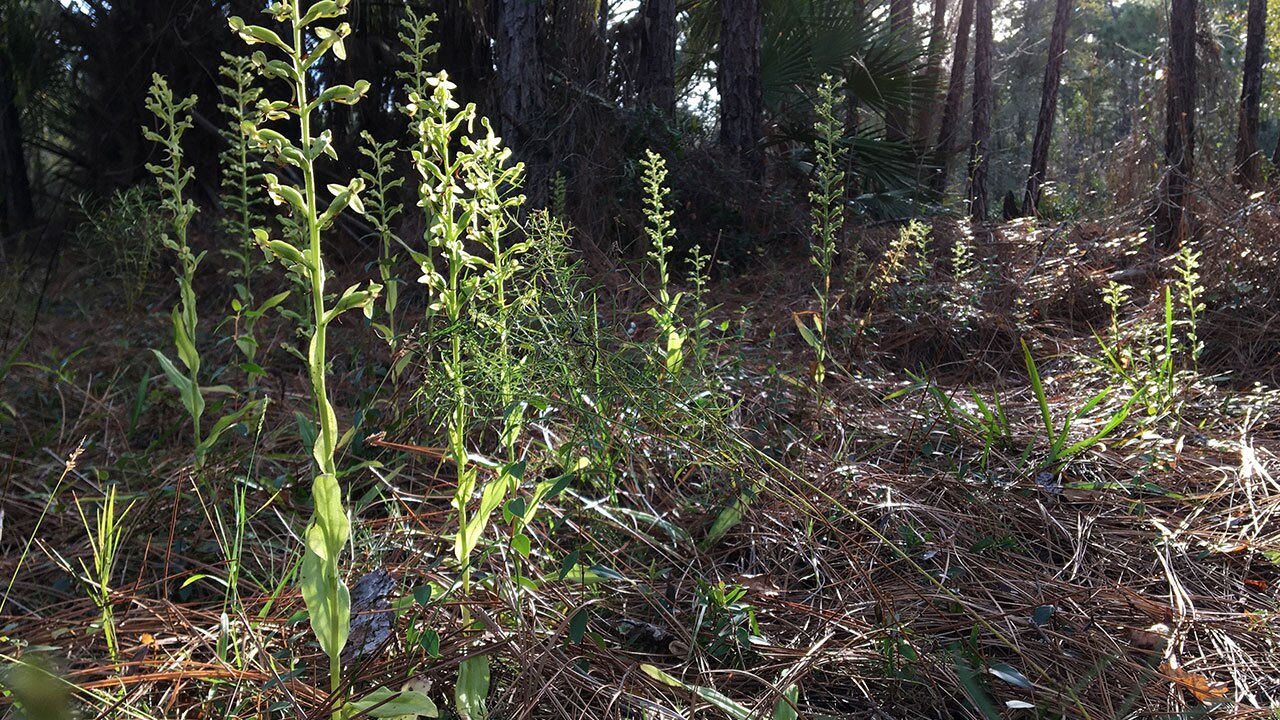
What’s unique about it? It’s one of Florida’s most common terrestrial orchids (meaning it doesn’t grow on trees).
Where can I find it? The false reinorchid can be found in shady, moist habits.
19. Bladderwort
What is it? Bladderwort are carnivorous. It uses its bladder-like structures to capture prey, mostly tiny insects. You can actually see the bladder with an unaided eye. Bladderwort generally have tiny yellow or purple flowers. Some bloom all throughout the year.

What’s unique about it? There are 200 species of bladderwort around the world. Fourteen are in Florida.
Where can I find it? Bladderwort can most often be found in aquatic, freshwater areas.
20. Ghost plant
What is it? The ghost plant’s common name is very fitting because it lacks chlorophyll. That causes it to be a waxy, white color.
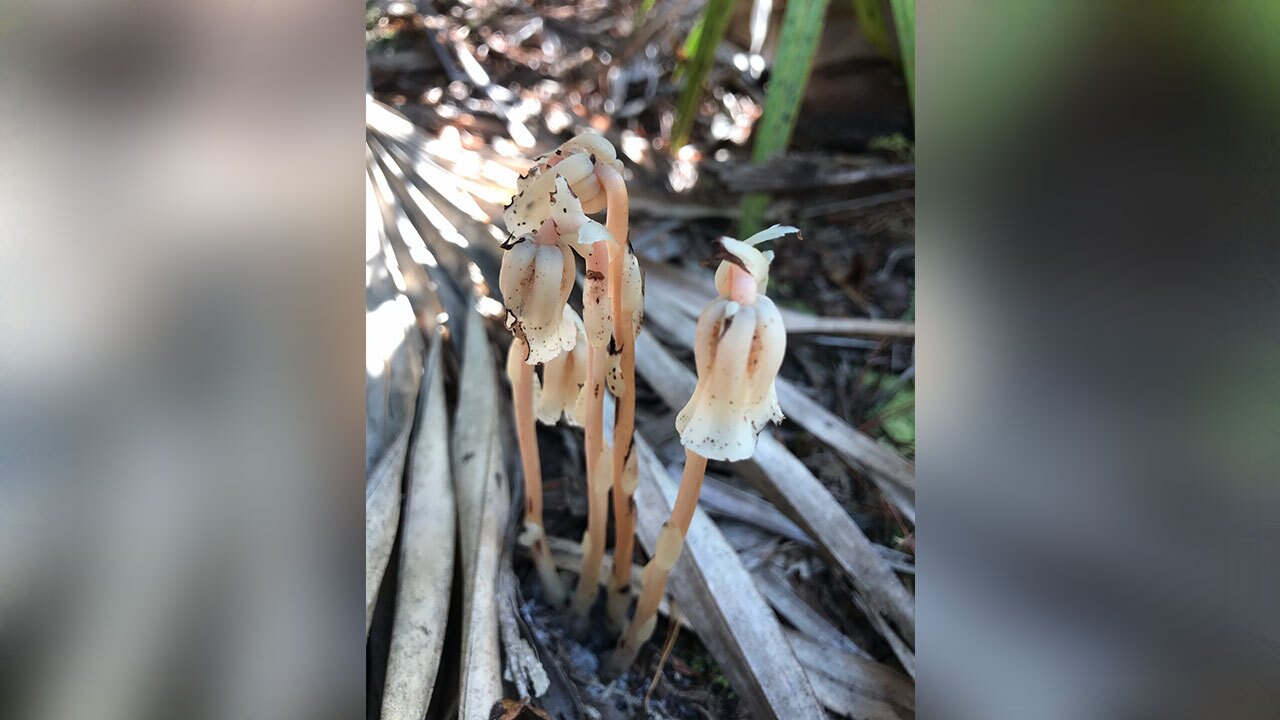
What’s unique about it? Ghost plants are commonly associated with a fungi called Russula.
Where can I find it? Ghost plants are quite rare. They’re usually found in moist soils in shady areas. Ghost plants can also grow in very dark spots because they don’t need sunlight.



